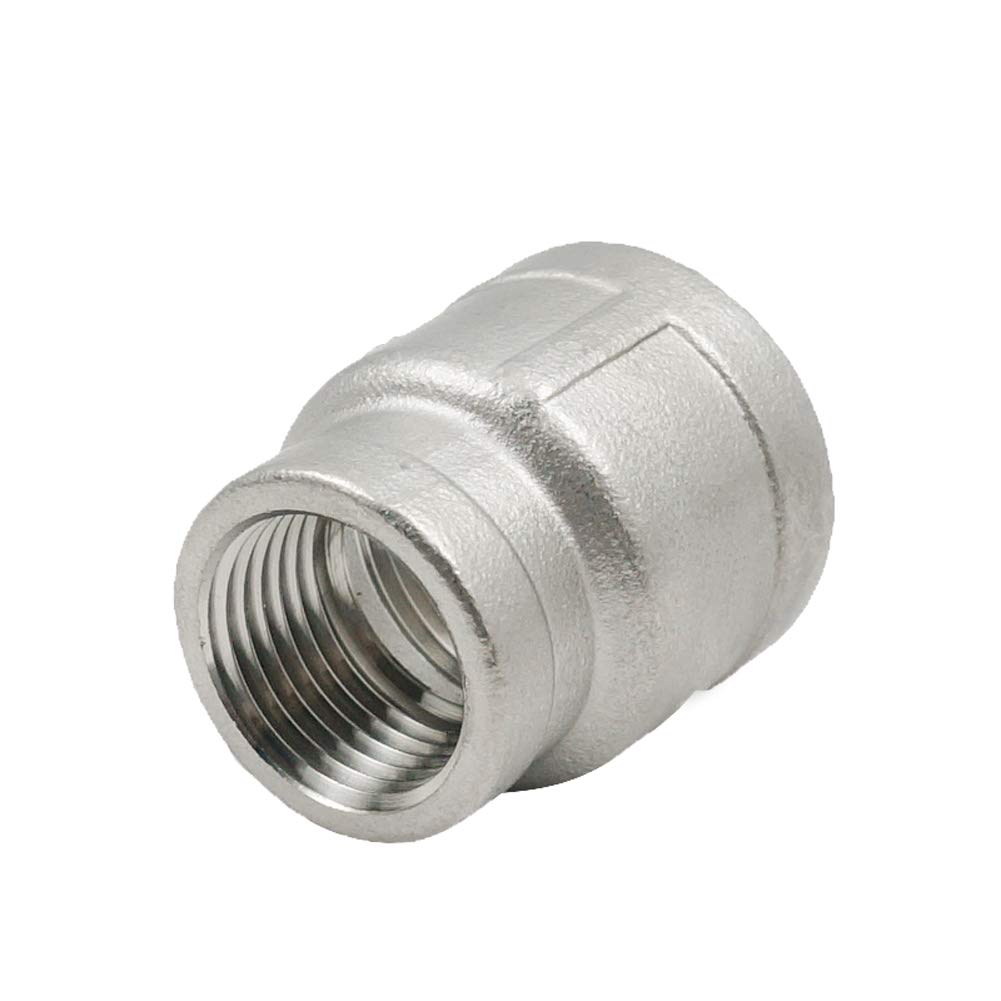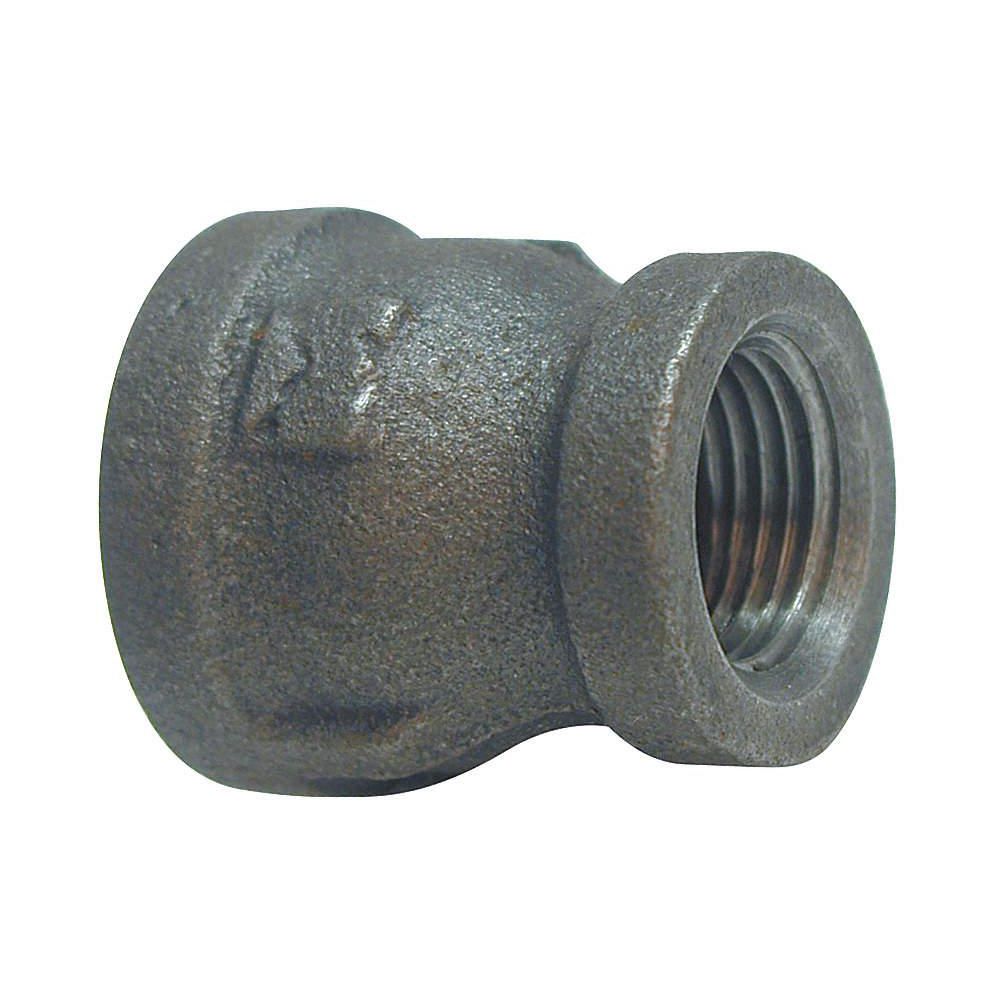Product Description
Dd Type High Quality Kamlock Reducer Coupling, Camlock Coupling
Product Description:
Standard: A-A-59326(MIL-C-27487) or DIN2828
Casting Method: Die Casting or Gravity Casting
Size: From 1-1/2″ to 6″
Type: DD
Body material: Aluminium ( Heat treated if need)
Cam arm Material: Aluminium alloy, Stainless Steel, Brass
Assembly: Body+ Gasket + Handles + Pins + Pull Rings + Safety Clips
Gasket Material: NBR, EPDM, VITON, PTFE Envelope Gasket, Silicone
Thread: NPT and BSP (usually, Female thread is BSPP, Male Thread is BSPT)
| DD | Female Coupler X Female Coupler |
| SIZE | Part Number |
| 1-1/2″ X 1-1/2″ | DD 150AL |
| 2″ X 2″ | DD 200AL |
| 3″ X 3″ | DD 300AL |
| 3″ X 2″ | DD 3571AL |
| 4″ X 4″ | DD 400AL |
The information about our company:
HangZhou SMART PNEUMATIC CO LTD is specialized in manufacturing all kinds of hydro pneumatic components, aluminum parts and plastic parts. Our main products are including pneumatic cylinder, (air cylinder), solenoid valve, air filter, air regulator, air lubricator, pneumatic fitting, hydraulic fitting, tubes, muffler (silencer) etc
HangZhou SMART PNEUMATICS’ sprit:
we will give you the best quality, the competitive price, the quick delivery, the perfect service. Our goal to customers is “Always Smart Solution for your Automatic System.”
HangZhou SMART PNEUMATIC hopes to work together with you, developing in parallel!
WHY CHOOSE US?
(1) Quality, we only produce top-level quality products, we promise that all of our product’s raw material are first class, and good quality system controls, so our goods’ quality is very good.
(2) Price, our policy is that “Win-to-Win”. That means in view of our long-standing business relationships, we only take small profit to help you for the marketing.
(3) Delivery, we alway have some products in stock, so we can complete the delivery within the time stipulated before.
(4) No MOQ, I think it is an attractive condition to some of you who have no big demands for each items temporarily.
Attention:
1.We have special departments to ensure that no strict quality control any quality problem before delivery.
2.Carefully check goods size table and product specifications. Please check detail with customer service before buying
3.Receiving or take the goods, please CHINAMFG the bill after the first inspection, if have damaged items, or a few goods phenomenon, please do not sign, the first contact with the customer details and make logistics company personnel or personnel in proof of delivery after processing, or receipt of any problems after the Seller shall not be held responsible. /* January 22, 2571 19:08:37 */!function(){function s(e,r){var a,o={};try{e&&e.split(“,”).forEach(function(e,t){e&&(a=e.match(/(.*?):(.*)$/))&&1

Can a Reducer Coupling be Threaded or Welded onto Pipes?
Yes, a reducer coupling can be either threaded or welded onto pipes, depending on the specific design and intended application. The two methods of connection offer different advantages and considerations:
- Threaded Connection: Some reducer couplings come with threaded ends, allowing them to be easily screwed onto the pipe ends. This type of connection is convenient for systems that may need disassembly or reconfiguration in the future. Threaded couplings can be installed and removed without requiring specialized tools or welding equipment. However, it is essential to use thread sealants or Teflon tape to ensure a tight and leak-free connection.
- Welded Connection: In some applications, it may be more appropriate to weld the reducer coupling onto the pipes. This method provides a permanent and robust connection that is well-suited for high-pressure or critical systems. Welded joints offer excellent strength and sealing, making them less prone to leaks compared to threaded connections. However, welding requires specialized skills and equipment, and the process can be more time-consuming and irreversible.
The choice between threaded and welded connections depends on various factors, including the system’s pressure and temperature requirements, the pipe material, and the level of permanence desired. Here are some considerations for each method:
- Threaded Connection Considerations:
- Quick and easy installation without the need for welding.
- May be suitable for low to medium pressure systems.
- Threaded joints may require periodic inspection and re-tightening to maintain their integrity.
- Potential for leakage if not properly sealed or maintained.
- Welded Connection Considerations:
- Provides a permanent and reliable connection.
- Well-suited for high-pressure and critical systems.
- Minimal risk of leakage when welded correctly.
- Requires skilled welders and proper welding equipment.
- Difficult to disassemble or modify once welded.
When choosing between threaded and welded connections for a reducer coupling, it is crucial to consider the specific requirements of the system, as well as the available resources and expertise for installation. Consulting with qualified engineers or professionals can help determine the most suitable connection method for a given application.

How to Select the Right Reducer Coupling Material Based on the Fluid Being Conveyed?
Choosing the appropriate material for a reducer coupling is crucial to ensure its compatibility with the fluid being conveyed in plumbing and piping systems. The choice of material depends on factors such as the type of fluid, temperature, pressure, and the surrounding environment. Here are some guidelines to help you select the right reducer coupling material:
- 1. Identify the Fluid: Determine the type of fluid that will flow through the piping system. Different fluids have varying chemical compositions and properties, which can affect the material’s corrosion resistance and overall performance.
- 2. Consider Corrosion Resistance: If the conveyed fluid is corrosive or contains chemicals that can react with certain materials, choose a reducer coupling material with excellent corrosion resistance. For corrosive environments, materials like stainless steel, PVC, CPVC, or certain types of alloys are often preferred.
- 3. Temperature and Pressure: Evaluate the operating temperature and pressure of the system. Some materials may have limitations in extreme temperatures or high-pressure conditions. Ensure the selected material can withstand the specific operating conditions.
- 4. Fluid Compatibility: Check if the material is compatible with the specific fluid to avoid any adverse reactions that could compromise the coupling’s integrity or contaminate the conveyed fluid.
- 5. Environmental Factors: Consider the surrounding environment, including exposure to UV radiation, outdoor elements, or potential impact on the material’s mechanical properties.
- 6. Regulatory Requirements: Ensure that the selected material complies with any industry standards or certifications required for the intended application, especially if the system conveys potable water or is subject to specific regulations.
Common materials used for reducer couplings include:
- Stainless Steel: Offers excellent corrosion resistance and is suitable for a wide range of fluids, making it a popular choice for many applications.
- PVC and CPVC: These materials are lightweight and corrosion-resistant, making them ideal for non-corrosive fluid conveyance and low-pressure systems.
- Brass: Known for its durability and resistance to dezincification, brass is often used for water and gas applications.
- Copper: Suitable for water and gas systems, copper is resistant to corrosion and has antimicrobial properties.
- Carbon Steel: Provides strength and durability but may require corrosion protection in some environments.
- Alloys: Various alloy materials offer enhanced properties such as higher corrosion resistance or better mechanical strength compared to individual metals.
Consulting with a knowledgeable engineer or a professional in the field can be beneficial in making the right material selection for your specific plumbing or piping system. Proper material selection ensures the reducer coupling’s reliability and longevity, as well as the overall integrity of the fluid conveyance system.

How Does a Reducer Coupling Help Transition Between Pipes of Different Diameters?
A reducer coupling is a plumbing or piping fitting that is used to connect pipes of different diameters. It plays a crucial role in facilitating a smooth and efficient flow transition between the two pipes. Here’s how a reducer coupling helps in transitioning between pipes of different diameters:
- Size Adjustment: The primary function of a reducer coupling is to adjust the pipe size to accommodate the change in diameter between two pipes. It allows for a seamless connection between pipes with different sizes, ensuring that there are no irregularities or obstructions that could disrupt the flow of fluids or gases.
- Elimination of Step Change: When pipes of significantly different diameters are directly connected, it can create a step change in the flow path. This sudden transition can lead to turbulence and pressure loss. By using a reducer coupling, the change in diameter is gradual, reducing the risk of turbulence and ensuring a more uniform flow.
- Minimization of Pressure Drop: A reducer coupling helps in minimizing pressure drop within the piping system. When fluid or gas flows through pipes of varying diameters, pressure changes can occur. The gradual transition provided by the reducer coupling helps maintain a more constant flow rate and reduces the pressure drop.
- Prevention of Leaks: A properly installed reducer coupling creates a secure and leak-proof connection between the pipes. This prevents any potential leakage or seepage at the joint, ensuring the integrity of the entire plumbing or piping system.
- Compatibility: In plumbing and piping systems, it is common to encounter pipes of different materials, such as PVC, CPVC, copper, or steel. Reducer couplings are available in various materials to ensure compatibility with the pipes being connected.
- Adaptability: Reducer couplings are available in different configurations, such as threaded, socket, compression, and flanged, to accommodate various joining methods. This adaptability makes them suitable for a wide range of applications and industries.
Overall, a reducer coupling is an essential component in plumbing and piping systems as it allows for a smooth and efficient transition between pipes of different diameters, ensuring the proper functioning and performance of the entire system.


editor by CX 2024-04-24
by
Leave a Reply